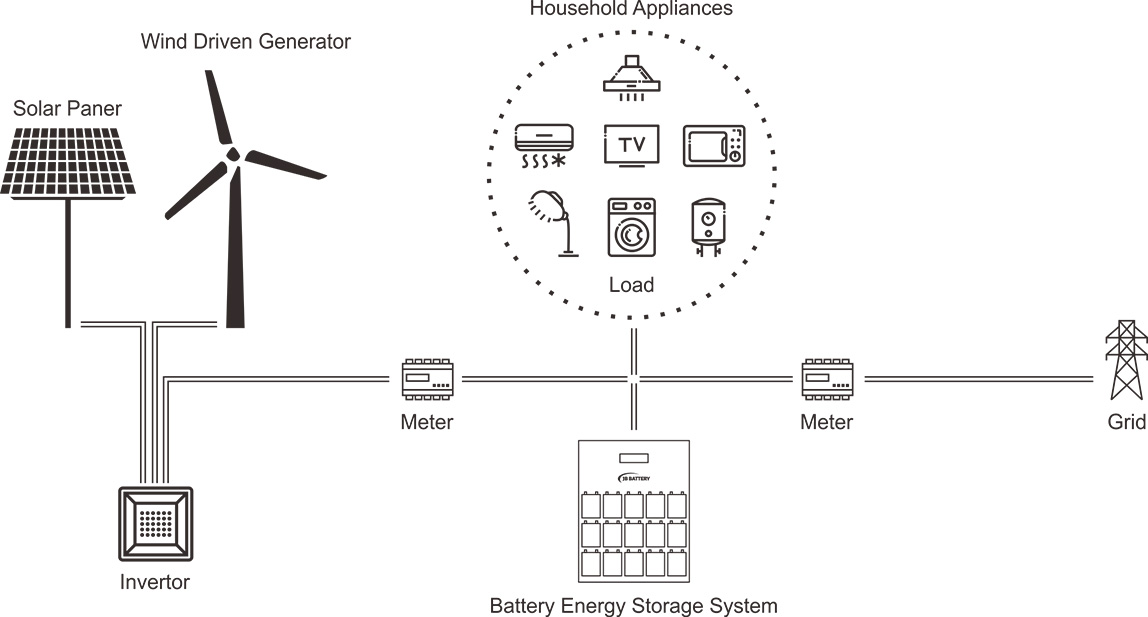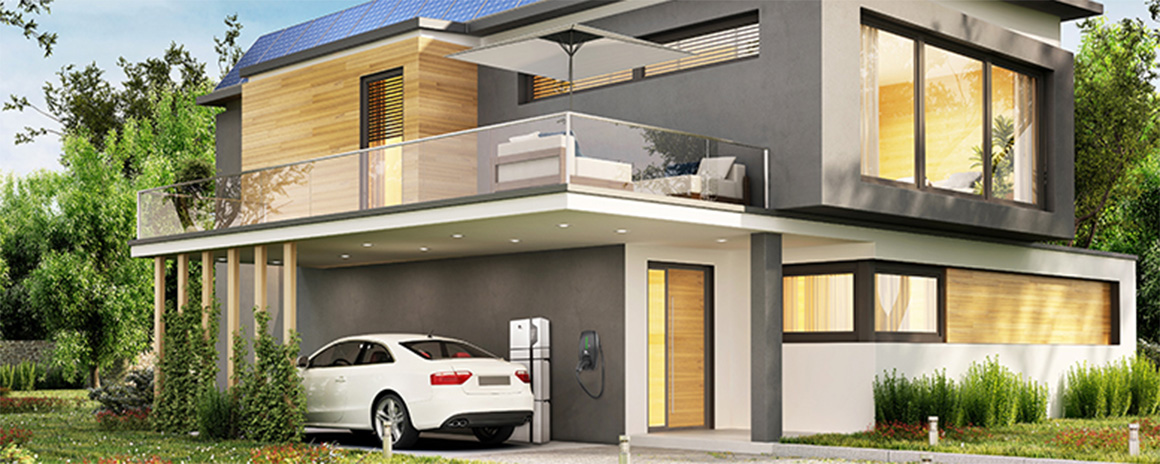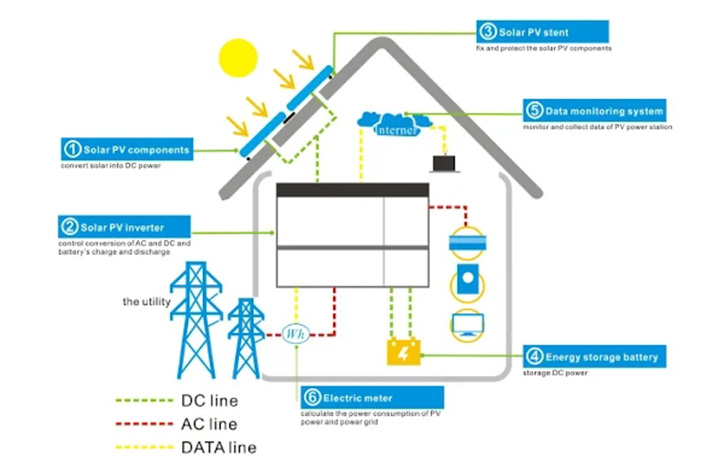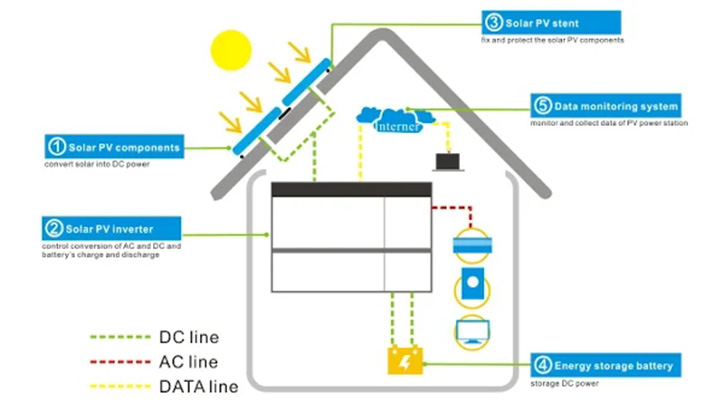HOUSEHOLD ENERGY STORAGE

How household energy storage system work
The household energy storage system is similar to a miniature energy storage power station, while it's operation is free from the pressure of the utility. Battery pack in the system is self-charged during the trough period of using electricity, and discharges it during the peak period of using or powering off electricity. In addition to using it as an emergency power supply, the system is able to balance the electricity load, thereby saving household electricity cost. Current market demand for household energy storage system more relies on the need for emergency power supply. However, in the eyes of professionals in the industry, the household energy storage system market is bright and promising. It combines a new energy power generation system, e.g. solar, and promotes the new energy on the other hand, contributing to building an intelligent power grid.

Structure and components of household energy storage system
Household energy storage system is currently divided into two kinds, grid-connected and off-grid. Grid-connected household energy storage system is mixed-powered by solar and the energy storage system, including five parts: solar array, grid-connected inverter, BMS management system, battery pack and AC load. When the utility works normally, the solar grid-connected system and the utility together power the load. When the utility powers off, the energy storage system and the solar grid-connected system together power the load. The grid-connected household energy storage system is divided into three working modes. Model I, solar provides energy storage and powers the utility. Mode II, solar provides energy storage and powers part of residential electricity. Mode III, solar only provides energy storage. Grid-connected household energy storage system is as shown in Figure 1.

Off-grid household energy storage system is independent, without any electrical connection to the grid. Therefore, the whole system does not need grid-connected inverter except PV inverter. The off-grid household energy storage system is also divided into three working modes. Model I, solar provides energy storage and powers residential electricity on sunny days. Mode II, solar and energy storage battery power residential electricity on cloudy days. Mode III, energy storage battery powers residential electricity at dusk and on rainy days. Offgrid household energy storage system is as shown in Figure 2.

In summary, current demands for energy storage equipment mainly are BMS management system, PV grid-connected inverter and energy storage inverter. Combined with the demands with the safety isolation requirement of the PV system’s unit circuits, JB Battery puts forward a complete power solution of the control unit.
Power Solution for BMS management system
Battery is the core energy storage device of the system and needs to be monitored online status in real-time, so the importance of BMS is self-evident. In the BMS management system, BCU real-time communicates with CAN bus and BMU to get monomer voltages, cabinet temperature, insulation resistance and others, with current sensor to collect charge and discharge current and dynamic calculation SOC and with touch screen to display relevant data. The BCU calculates and analyzes all the information of the battery pack and then intelligently manages the system, communicating with the independent CAN bus and achieving the secondary protection of charge and discharge through a relay. The latter ensures an effective isolation for strong electricity and weak electricity, meets customer’s demand for diverse security control and guarantees stable and efficient operation of the system.
Energy storage supports the energy transition
Producing power from renewable sources means volatility – and energy storage is the key to matching supply to demand.
Generating electricity from renewables varies greatly due to the unpredictable nature of the weather. In some cases, renewable power plants end up producing more electricity than is actually needed for current demands. Energy storage systems solve this problem by storing surplus energy and making it available at a later time as needed. Electricity can then be taken from the stored energy and fed into the grid.
Energy storage systems can integrate renewables by shifting energy to high-demand periods, or provide grid services like frequency control or spinning reserve. It's also possible to use the stored energy in the form of heat and cold, or as synthetic fuel e.g. for transportation. In addition to being a key component in the expansion of renewables and ensuring a sustainable, reliable and economic power supply, energy storage systems are also an important factor in what is known as "sector coupling".

 English
English Português
Português 日本語
日本語 Español
Español Pусский
Pусский Deutsch
Deutsch 한국어
한국어 العربية
العربية Français
Français Tiếng Việt
Tiếng Việt Italiano
Italiano